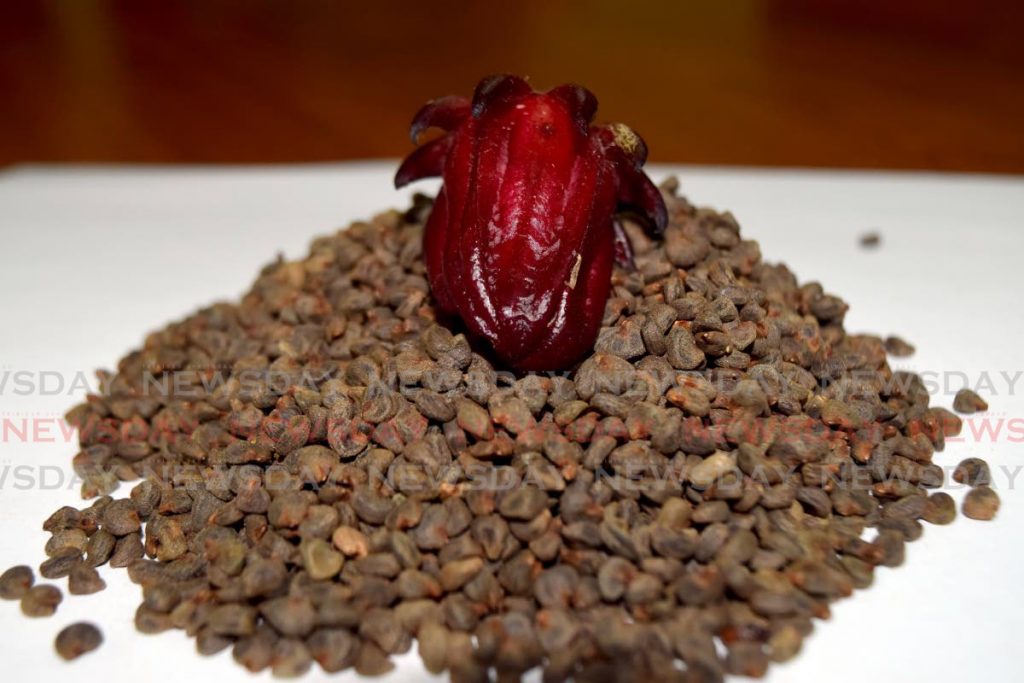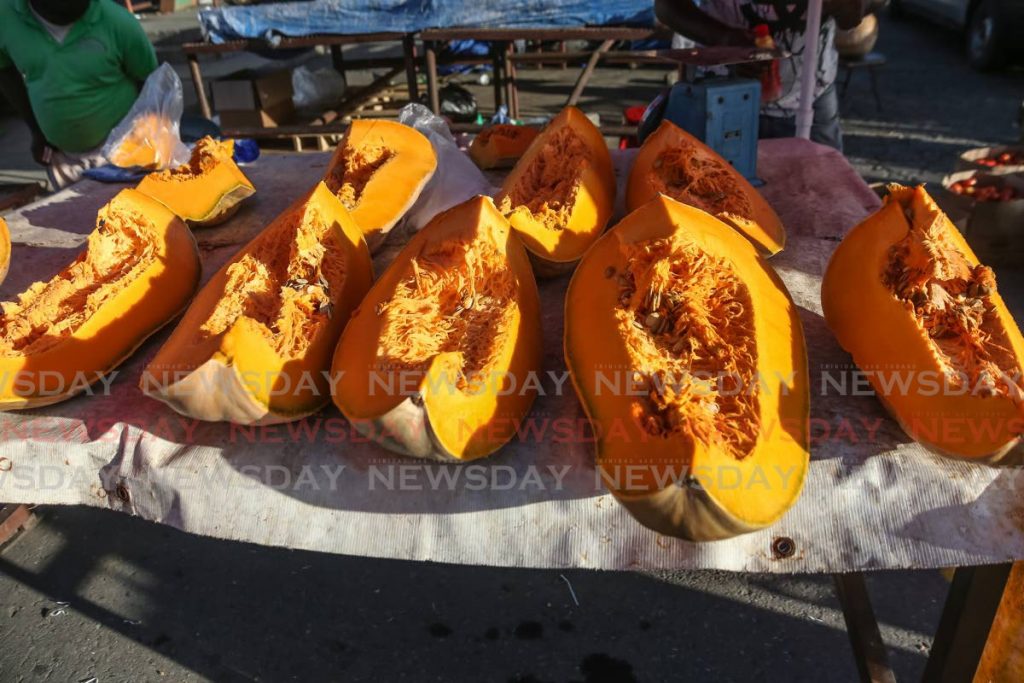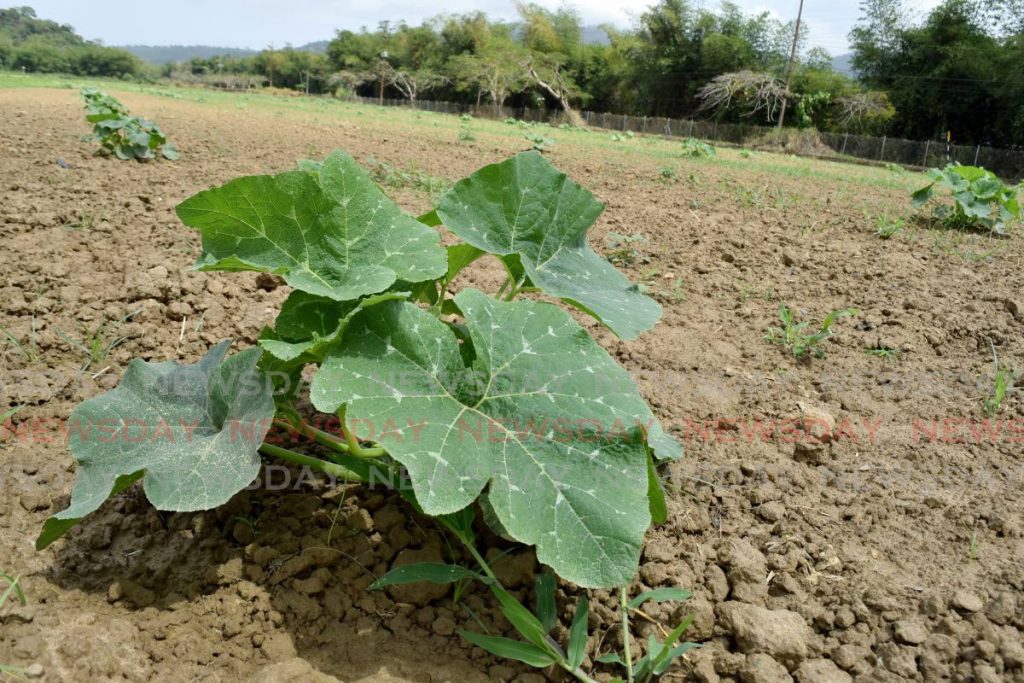National Seed Bank reaps what it sows

Long past the Christmas season, people were able to pick sorrel for free last month from the National Seed Bank in Tucker Valley, Chaguaramas.
Every year the seed bank gets help from the public to harvest sorrel. The bank gets the seeds and the sorrel pickers go home with the sorrel flowers.
Business Day visited the seed bank last Thursday to speak to its deputy director Ian Mohammed.
The National Seed Bank is a subdivision of the Agriculture Services Division, Ministry of Agriculture, Land and Fisheries. Its mandate is to produce seeds for the farming community and general public.
It was once the Chaguaramas Agricultural Development Project (CADP) which was established in 1971 by the government in collaboration with the Federal Republic of West Germany.
Apart from the seed bank there are three other stations: St Augustine Nurseries on Farm Road, Curepe which plants citrus, avocadoes, mangoes and other fruits; La Reunion Plant Propagation Station, Centeno which produces breadfruit, cocoa and coffee plants; and Marper Farm in Plum Mitan which does coconuts, citrus and avocadoes.
Pick the sorrel, leave the seeds
The seed bank is approximately 100 acres with 50 acres designated to farming land. At any given time, there are several crops planted. At the time of interview, there were cassava, ochro, sweet potato, bodi, corn, pigeon peas and sorrel.
All the crops except for corn are picked by hand. The corn is the only crop that is mechanised. Sorrel is the only crop the bank allows the public to pick.
"Our sorrel picking time is normally February and March. The sorrel picking where the public goes to pick is a traditional exercise we have ever since we planting sorrel.”
Sorrel is a hibiscus. When in bloom, the tree first has a pink flower that turns into the thick red fruit in a month. The sorrel blooms five to six months after being planted, then lasts for two months on the tree. The seed bank has two types of red sorrel, early red and year-round.
“Both early red and year-round are the same red, but year-round will bear year-round once it matures.”

The seed bank got seed material for black sorrel and may introduce it to the field.
When the seed bank began the public picking at the beginning of February, the whole sorrel field looked red, but when Business Day visited after picking was closed off, there were few trees sparsely baring flowers.
Mohammed said most people went with a knife or scissors to pick the flower or they broke the flowers off with their hands.
While people are getting free sorrel, they also have to be careful. Some bushes have cow itch, a dry season weed that will irritate the skin on contact.
Cow itch is a vine and can strangle the sorrel or any other crop. The farmers cannot cut down the weed because when it's cut down, the cow itch spores spread to the surrounding trees.
"Certain weeds we can't really control. It's there...And you're putting a worker in jeopardy to manually remove that.”
Now that the public picking has ended, the seed bank staff will pick the remainder of the flowers in the field.
The bank does not have any year-round sorrel planted, and the staff is looking to plant more, so the public could go and pick again.
"With the year-round, if the public comes, they would have sorrel every so often because it would just continue to bear after it is picked out.”
After the sorrel is picked, it must be cleaned so the bank can collect the seed pod. One pod could hold eight to ten seeds.
The public cannot pick any other crop but sorrel because all the other crops, the seeds cannot be left behind.
"If we call them to pick pigeon peas, for instance, we lose the seeds. With sorrel they only need the red part, we need the inside part. Hot peppers, same thing, we need the seeds."

However, when pumpkin is harvested, the seeds are taken out and the bank sells the flesh at $3 per kilogramme.
Besides selling the pumpkin, it is donated to places like the orphanages, Living Water Community and the army. The near-by petting zoo gets overripe and rotting pumpkin to feed the animals.
On the pigeon peas
“Sorrel just finished and we are now picking peas. We are going to plant the land again, because those are the ones that are in high demand: the corn, pigeon peas and melongene.”
There is a seed processing facility that does moisture processing. The bank would clean, sort and package the seeds. There is a silo or seed processing area to do that.
The bank provides seeds for farmers from all over the country in the eight counties. Non-farmers, the general public and farmers can purchase seeds, but there are limits for the public.
“Very rarely would someone from the public ask for ten packs of seeds. Our antennas will go up if you are just a member of the public and you don't have a valid farmer's ID. Farmers are registered in the different counties, through the county offices for the ministry. Once you present your valid farmer's ID, you could get the quantities you are looking for.”
During the lockdown last March, there was an increase in demand for seeds by the public.
“People felt as if they needed to occupy time to provide food for themselves because they could not go out to get it. We had a high demand for seeds. Home gardeners set up grow boxes and pods.”
At any point in time the seed bank has 2000 kilogrammes of seeds in cold storage for disaster mitigation.
“In case of floods and farmers need start-up material to replant, they have that available.”
The seed bank only collects local seeds that are suited for TT’s soil, not hybrids.

“We don't do hybrids. We do open-pollinated varieties, which are locally adapted varieties.”.
Locally adapted means a plant can be grown from the seeds and produce the same quality of plant as the parent tree. There are some tomatoes and sweet peppers, he said, are hybrids.
“If you take the seeds from a hybrid and plant it, you're not going to get back with what you started with. You might get something different like a very bland sweet pepper or an off-looking tomato, but you're not going to get the exact thing.”
The plants the seed bank cultivates will produce the same quality of fruit and vegetable as the parent plant.
PM's yam from Ghana
The seed bank recently launched three varieties of yam from Ghana. When the Prime Minister visited the country last year, he brought back cultivation material for the bank.
“He came back with the material and we multiplied it here. He came back with enough to plant a half acre – roughly 20 pounds each.”
A yam has three parts that can be propagated: head, middle and tail. To plant yam, it just has to be put in the soil and the root crop will grow.
The bank will expand its yam propagation material and make it available to farmers.
All the costs of seeds and propagation material are subsidised by the bank. A potato slip, for instance, will produce at least four plants and that slip sells for 20 cents.
“The cost of production for farmers could be cut down by 40 per cent or even 50 per cent because hybrid seeds are very expensive. You might pay $1,000 for a pack of hybrid seeds and every time you grow a crop, you'll have to buy seedlings. Those are imported seeds. Our seeds are not imported seeds, we have local seeds.”
Sorrel seeds cost $2 a pack, corn $1 and one pack can grow an acre.

Comments
"National Seed Bank reaps what it sows"